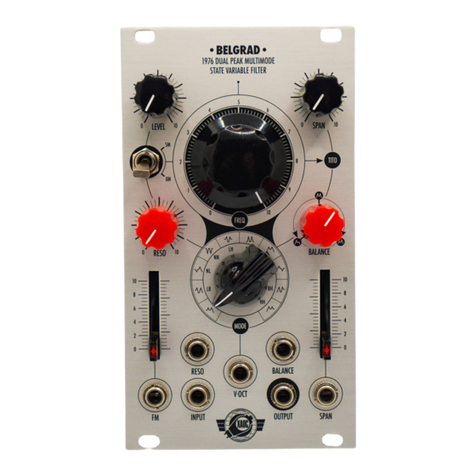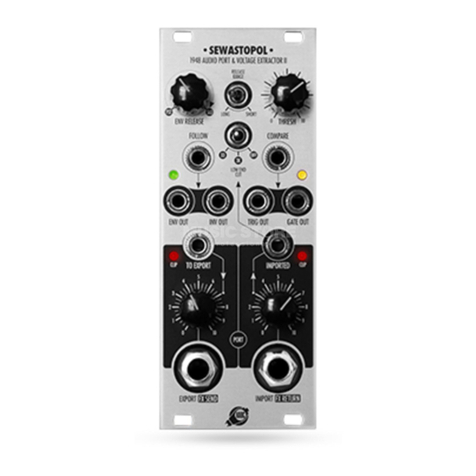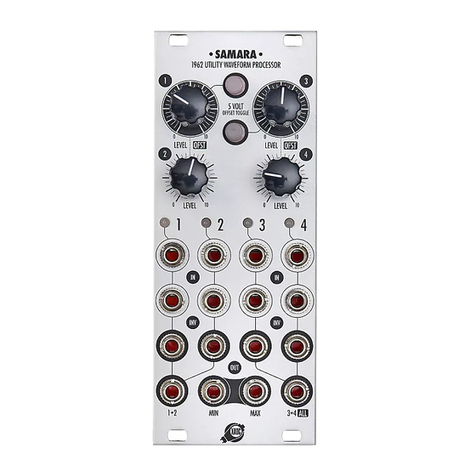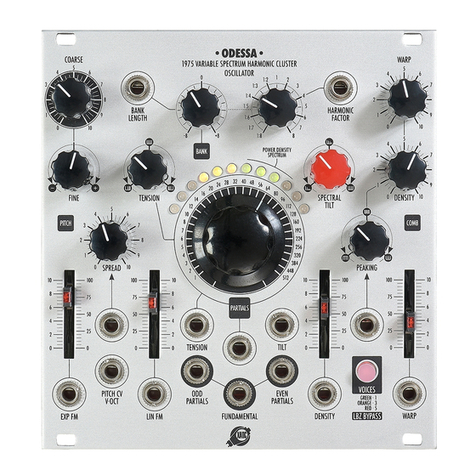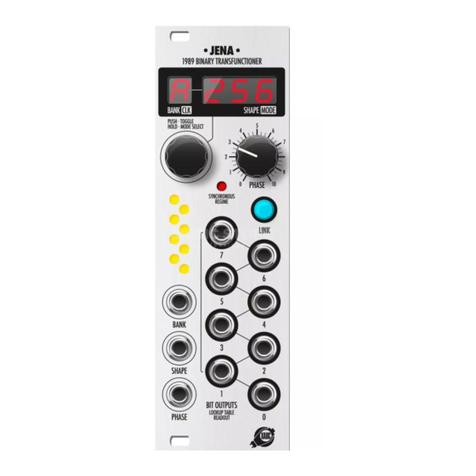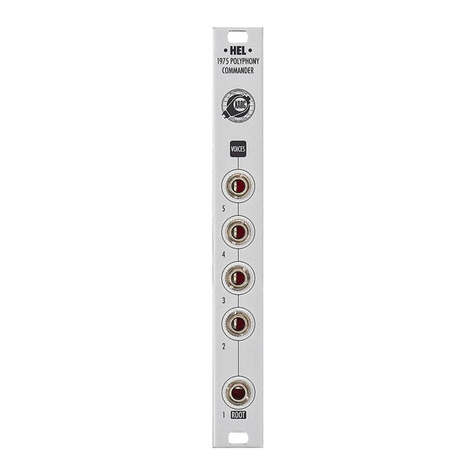
SALUT
Thank you for purchasing this Xaoc Devices
product. Rostock is a data pipeline,
very short digital delay. Its length is variable
from 1 to 64 stages (with optional looping and
scrambling). Rostock is a component of the
modules that operate on 8-bit data. It works by
processing data in the Leibniz bus and must be
connected to other Leibniz modules using data
ribbon cables at the back. Rostock may process
data sequences representing rhythms, control
voltages, audio-rate signals, and even video
signals because the bits can change at extreme
rates (up to 2MHz). In addition, its memory
may be digitally looped. Delaying and looping
is a fundamental building block for sequence
automation, pattern and chaos generation,
and various cybernetic modular patches. Thus,
Rostock is a multi-purpose open-ended device
that invites creative thinking.
To better understand the device and avoid
common pitfalls, we strongly advise the user
to read through the entire manual before use.
INSTALLATION
The module requires 8hp worth of free space
in the Eurorack cabinet. Always turn the pow-
er off before plugging the module into the
bus board using the supplied 16-pin to 16-pin
ribbon cable, paying close attention to power
cable pinout and orientation. The red stripe
indicates the negative rail and should match
the dot or –12V mark on the bus board as
well as the unit. Rostock is internally secured
may cause serious
damage to other components of your system
because it will short-circuit the +12V and +5V
power lines. Always pay close attention to the
proper orientation of your ribbon cable on
both sides!
Besides power, you need to connect Rostock to
other components of your Leibniz Subsystem.
We advise you to plan ahead as to how you
wish to incorporate Rostock into your modular
setup. The module ships with one 10-pin ribbon
data cable, so you will need to use the addi-
tional 10-pin cables included with your other
Leibniz modules to complete the connection.
First, connect the 10-pin unshrouded header
labeled out to the in header of your next Leib-
niz-compatible module (e.g., Drezno, Poczdam,
Lipsk, Jena, Erfurt, Odessa, etc.). Then connect
the out header of the module that will provide
input data to Rostock (e.g., Poczdam, Drezno,
Erfurt, Ostankino, etc.) to the 10-pin unshroud-
ed header labeled in. Please observe the marks
of pin #1 (red stripe) on all connected modules.
warning: do not plug a power cable
into the leibniz headers; this will dam-
age your unit and may also jeopardize
other leibniz modules connected to it!
The module should be fastened by mounting
the supplied screws before powering up.
MODULE OVERVIEW
Contrary to many other modules in the Leib-
niz series, Rostock does not offer data input or
data output jacks. Hence it relies entirely on
the data connections at the back of the mod-
ule. It features a bank of eight clock inputs 1,
2
module
explained
